I am trying to setup a NSTableView with a custom cell using an ArrayController and Bindings. To accomplish this I added a subview to the custom cell. The data connection seems to work somewhat. Though, there seems to be a redraw problem which I cannot fix. When I load the application only some of the cells are rendered. When I scroll through the rows or select one the rendering changes.
I created an example project on github to illustrate what the problem is.

The actual source code for the cell rendering can be found here:
// CustomCell.m
- (void)drawInteriorWithFrame:(NSRect)cellFrame inView:(NSView*)controlView {
if (![m_view superview]) {
[controlView addSubview:m_view];
}
// The array controller only gets wrapped data items pack by the NSObjectTransformer.
// Therefore, objectValue returns a NSObjectWrapper.
// Unpack the wrapper to retreive the data item.
DataItem* dataItem = [(NSObjectWrapper*)[self objectValue] original];
[[m_view name] setStringValue:dataItem.name];
[[m_view occupation] setStringValue:dataItem.occupation];
[m_view setFrame:cellFrame];
}
It seems as if the parent controlView does not redraw. Can I force it somehow?
